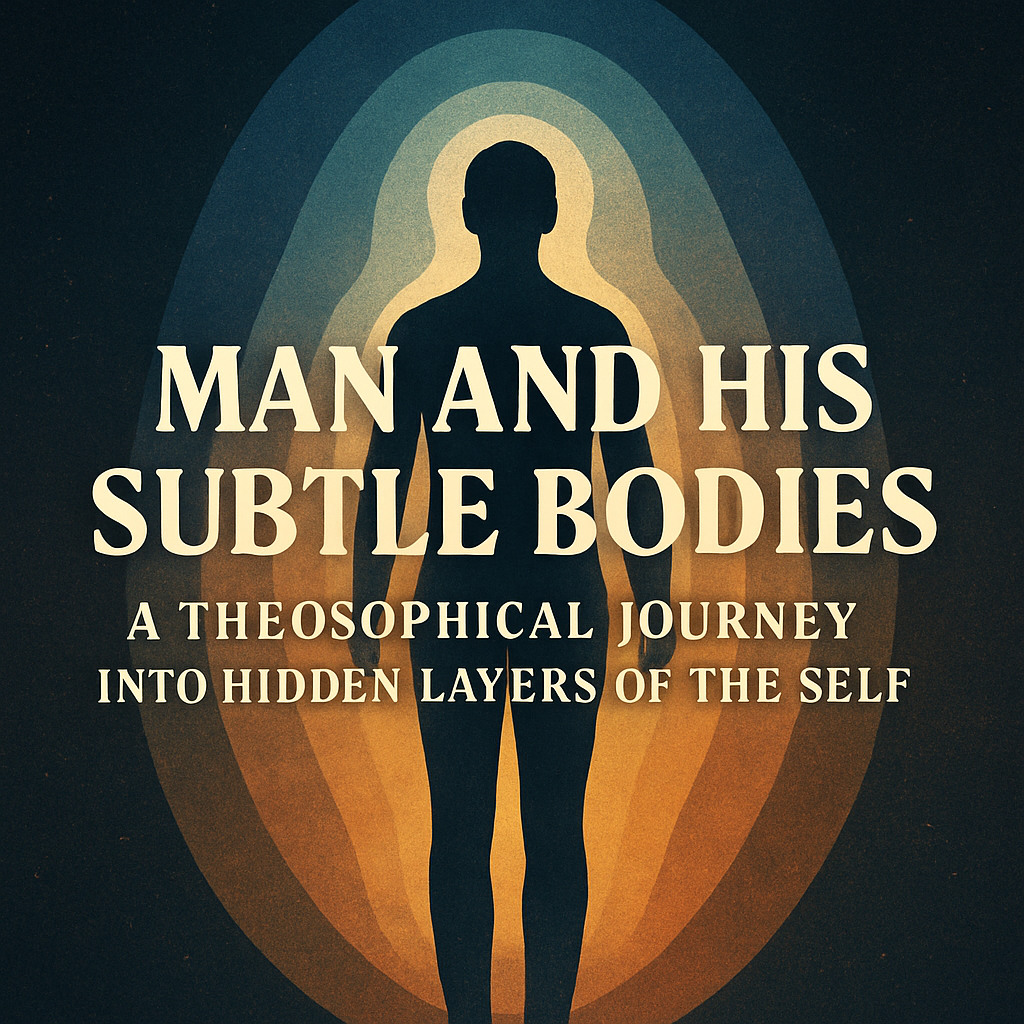1. The Physical Body: Temple of Experience

The outermost layer of man is the physical body, our vehicle of action and perception in the dense material world. According to Theosophy, this body is not an end in itself, but a transient garment shaped by karma and designed for the soul’s learning. Its cellular makeup is animated by pranic energy, but alone it is inert, requiring the more subtle etheric body to become fully alive. Annie Besant stresses that caring for this body is a sacred duty — a temple that houses the divine flame.
2. The Etheric Double: Bridge of Vitality

Interpenetrating and sustaining the dense body is the etheric double — a finer matrix composed of subtle matter. It serves as the energetic interface between the physical and higher bodies, transmitting life force (prana) and vital currents. Besant describes this double as crucial in healing, sleep, and even mediumistic phenomena. While unseen to the average eye, it is perceptible to clairvoyants as a violet-gray outline around the body. This sheath dissipates gradually after death, explaining many post-mortem energetic phenomena.
3. The Astral Body: Seat of Desire and Emotion

Often called the body of desire, the astral body is the seat of emotions, passions, and sensory-based consciousness. It is through this layer that we experience joy, sorrow, anger, or love — all of which shape karmic consequences. Besant elaborates that the astral body continues to function after physical death, residing in the astral plane where the soul reviews and integrates emotional experiences. Dreams, lucid states, and certain visions often arise when our awareness temporarily shifts into this vehicle.
4. The Mental Body: Forge of Thought

The mental body corresponds to the world of thought. Divided into lower and higher segments, it governs logic, memory, imagination, and aspiration. The lower mental body is personal and analytical, while the higher mental connects to abstract, altruistic, and philosophical ideas. Besant highlights that education should not merely stuff facts but refine this body to become a noble instrument of truth and discernment. As thought creates form, our mental body sculpts both our character and future.
5. The Causal Body: Vessel of the Soul

At the core of individual existence lies the causal body, also known as the karana sharira. This is the abode of the soul — the enduring self that carries the essence of experiences across incarnations. According to Besant, it is not touched by transient emotions or fleeting thoughts but records only that which is noble, universal, and enduring. The development of this body marks the evolution of man from personality to individuality, from form to essence.
6. The Spiritual Sheaths: Beyond Form
Beyond the causal body, subtle currents guide us toward the buddhic and atmic planes — representing intuition and will, unity and divine essence. These are not “bodies” in the ordinary sense but luminous states of being, accessible only through deep spiritual practice. Annie Besant notes that the awakening of these sheaths corresponds with initiatory stages and the path of discipleship. Here, the illusion of separation dissolves, and the individual begins to operate as a conscious agent of divine will.
7. Conclusion: Integration and Ascent
Theosophy reveals man not as a mere body or even a soul cloaked in matter, but as a spark of divinity expressing itself through sevenfold vehicles. To know these bodies is to gain mastery over life, death, desire, and destiny. As Annie Besant so beautifully taught, self-knowledge leads to self-mastery, and self-mastery opens the gates of higher initiation. In understanding our subtle anatomy, we take the first conscious steps toward spiritual ascent — toward remembering who and what we truly are.
